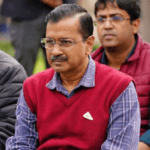Prime Minister Narendra Modi appears likely to remain at the helm for another five years as Lok Sabha elections approach. Recent opinion polls give the Bharatiya Janata Party-led National Democratic Alliance a clear edge — backing the PM’s assertions that the grouping will secure more than 400 seats in the lower house of Parliament.
What is the majority mark?
The winning party or alliance will need to secure at least 272 seats in the 543-member Lok Sabha. The BJP alone secured 290 seats in the 2019 general elections. The NDA as a whole currently holds 346 seats.
Which states send the most candidates to Lok Sabha?
Uttar Pradesh leads the list with 80 parliamentary constituencies. Maharashtra will send 48 lawmakers to the Lok Sabha while West Bengal sends 42 representatives.
Which states pose a challenge for the BJP?
According to the ABP News-CVoter survey, the BJP will find it difficult to secure a majority in West Bengal with projections indicating 23 seats for the ruling TMC. Odisha will see a similarly two-pronged battle with the opinion poll giving a slight edge to the Biju Janata Dal. The ABP News-CVoter survey predicted 10 seats for the NDA, 1 seat for the INDIA bloc (if any) and 11 seats for the Naveen Patnaik-led BJD.
The Congress is expected to make massive inroads into Telangana and secure 10 Lok Sabha seats. The BJP is projected to clinch 4 seats while the Bharat Rashtra Samithi gets 3 seats and All India Majlis-E-Ittehadul Muslimeen secures 1 seat.
The pre-poll survey also suggested that the BJP would fail to open its account in the southern states of Kerala and Tamil Nadu. ABP News-CVoter indicated 16 seats for the Congress in Kerala. Meanwhile, in neighbouring Tamil Nadu, it projected a sweep for the DMK and its allies — with the Congress likely to bag 8 seats and DMK estimated to win 31 seats.
Meanwhile, Network18’s Mega Opinion Poll predicted 411 seats for the NDA — with the BJP securing a record 350 seats. The survey indicates that the alliance will face stiff competition in Odisha (13 out of 21), West Bengal (25 out of 42), Telangana (8 out of 17), Tamil Nadu (5 out of 39) and Kerala (2 out of 20). It is however pertinent to note that these numbers indicate a sharp rise from previous elections.






